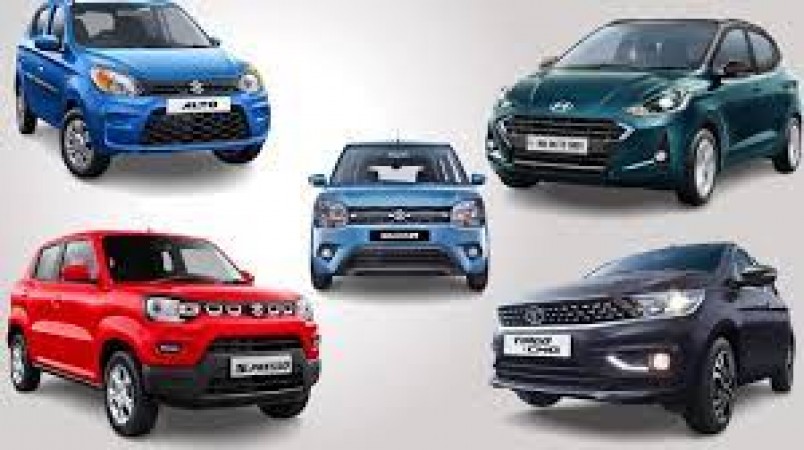
In today's dynamic automotive landscape, the pursuit of both affordability and sustainability has become a central focus for consumers. While the spotlight often falls on CNG and electric vehicles as the go-to options, a new wave of pocket-friendly alternatives is emerging, challenging the traditional norms and redefining the concept of cost-effective mobility. In this exploration, we delve into the innovative alternatives that offer economic advantages without relying on CNG or electric power, showcasing a diverse array of choices for the modern, conscious consumer.
The rise of hybrid cars represents a significant shift in the automotive paradigm. These vehicles seamlessly blend traditional combustion engines with electric propulsion, providing optimal fuel efficiency. The key to their appeal lies in the dual power sources working in tandem, allowing for reduced fuel consumption and lower emissions. Hybrids are becoming increasingly popular among consumers seeking a balance between environmental consciousness and economic sensibility.
Ethanol, derived from renewable sources such as corn, is gaining traction as a viable alternative fuel. Ethanol-powered cars offer a greener option without compromising on performance. Exploring the various ethanol blends and understanding their impact on mileage becomes crucial for consumers looking to make informed decisions about their fuel choices.
Delving deeper into the nuances of ethanol blends and their direct correlation with mileage, this section serves as a practical guide for budget-conscious consumers. Understanding the trade-offs between different ethanol concentrations ensures that users maximize both the economic and environmental benefits of ethanol-powered vehicles.
Liquefied Petroleum Gas (LPG) vehicles are quietly carving a niche in the market. With affordable conversion kits and an expanding network of refueling stations, LPG is emerging as an attractive option for consumers seeking budget-friendly alternatives. The section explores the economic viability of converting a conventional vehicle to run on LPG and evaluates the long-term savings associated with such a conversion.
Unpacking the economics of converting a traditional vehicle to run on LPG, this section examines the initial investment, ongoing operational costs, and the overall impact on a consumer's pocket. By weighing the benefits against the costs, consumers can make informed decisions about the feasibility of LPG conversions.
Innovation in the automotive sector extends beyond conventional fuels, and compressed air technology is a prime example. Retrofitted kits now allow existing vehicles to harness the power of compressed air, showcasing how innovation can come from unexpected sources. This section explores the principles behind compressed air technology and its potential as a pocket-friendly alternative.
Microcars are making a noteworthy comeback, emphasizing minimalistic design and fuel efficiency. These pint-sized vehicles provide an economical solution for urban commuting. By comparing the benefits and drawbacks of microcars against their larger counterparts, this section sheds light on their affordability and efficiency in various scenarios.
This subsection further delves into the comparison between microcars and traditional compact vehicles. By examining factors such as fuel efficiency, parking convenience, and overall cost of ownership, consumers can make informed choices based on their specific needs and preferences.
While not synonymous with CNG, vehicles powered by natural gas are gaining attention as viable alternatives. This section assesses the economic viability and environmental impact of natural gas vehicles, providing consumers with a comprehensive understanding of this often-overlooked option.
Examining the expansion of natural gas refueling infrastructure becomes crucial in understanding the practicality of natural gas vehicles. This section highlights the growing network of refueling stations and its role in making natural gas vehicles more accessible to the general public.
Beyond the choice of fuel, creative financing models are transforming the way consumers acquire cars. Subscription services, leasing, and community-driven ownership programs are redefining affordability and altering traditional notions of car ownership.
This subsection explores the rise of collaborative ownership and sharing models, emphasizing how these innovative approaches contribute to reducing individual costs and environmental footprints. As consumers embrace alternative ownership models, the automotive landscape undergoes a paradigm shift.
A glimpse into the future reveals emerging technologies and trends that promise even more budget-friendly options for consumers. From advancements in fuel efficiency to breakthroughs in alternative power sources, the automotive industry continues to innovate, providing a glimpse of what lies ahead for cost-conscious and eco-conscious consumers.
Practical tips for consumers take center stage in this section, offering guidance on navigating the plethora of choices available. From weighing affordability and environmental impact to assessing long-term savings, this consumer guide equips individuals with the knowledge needed to make informed decisions aligned with their values and preferences.
In a market saturated with CNG and electric options, these alternatives underscore that pocket-friendly and sustainable choices extend beyond the mainstream. As the automotive industry continues to innovate, consumers can look forward to a future where affordability and eco-consciousness seamlessly coexist, driving the evolution of the automotive landscape.
India's Ghatak Stealth UCAV Demonstrator Achieves Another Successful Flight Milestone